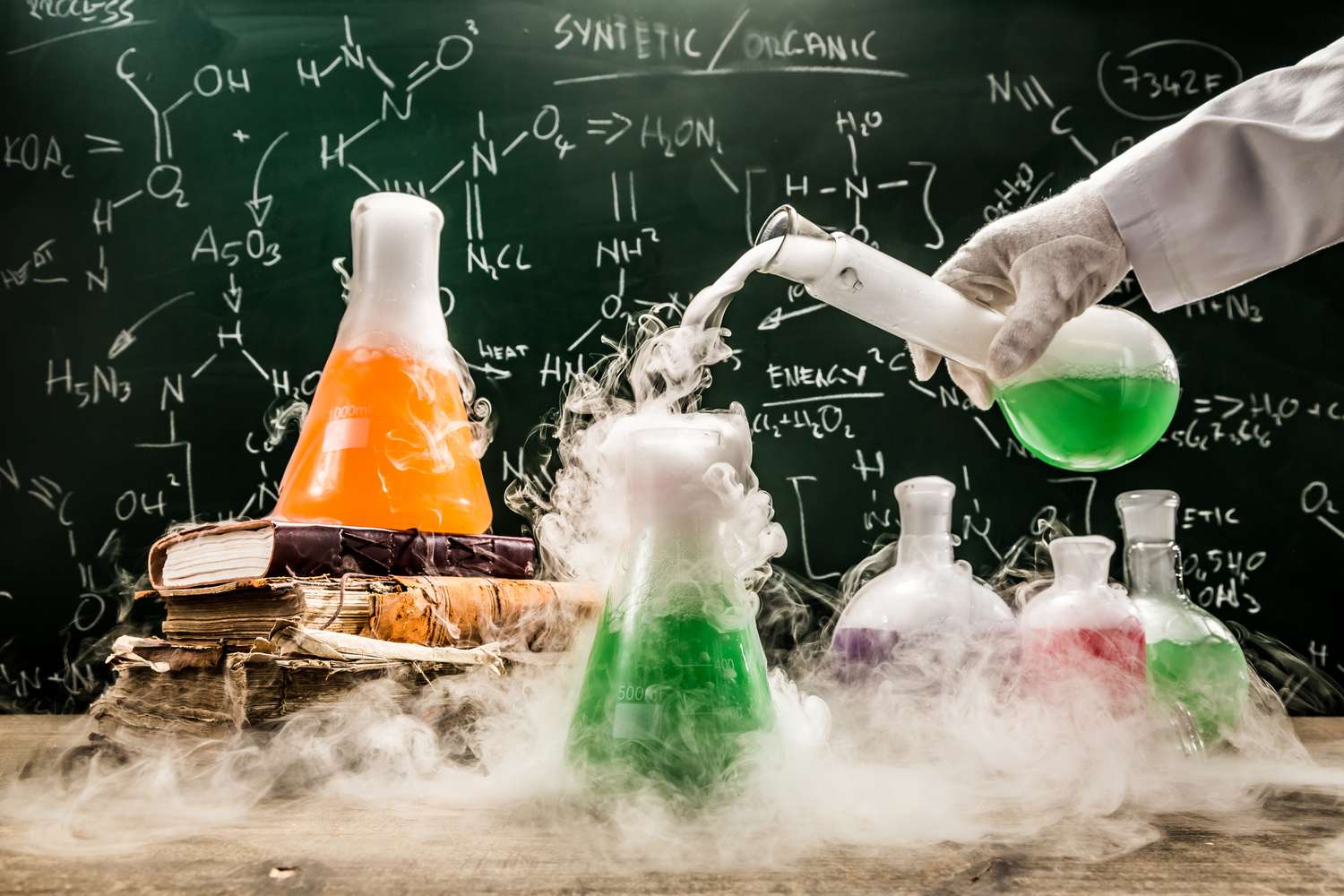Chemistry is an incredibly complex subject that involves understanding the properties and behavior of matter on a molecular level. One important concept in chemistry is the process of separating and purifying mixtures. This is where STP, or Separation, Purification, and Identification, comes into play.
In this blog post, we'll dive into what STP in chemistry is, how it works, and why it's so important.
What is STP in Chemistry?
STP stands for Separation, Purification, and Identification. These are the three main steps involved in the process of separating and purifying mixtures in chemistry.
- The first step in STP is separation. This involves physically separating the different components of a mixture based on their different physical and chemical properties. For example, if you had a mixture of sand and salt, you could use filtration to separate the sand from the salt.
- The second step in STP is purification. This involves removing impurities from the separated components in order to obtain pure substances. There are many different purification methods that can be used depending on the properties of the substance and the impurities present.
- Finally, the third step in STP is identification. This involves identifying the separated and purified components of the mixture using various analytical techniques, such as spectroscopy or chromatography.

How does STP work?
STP works by taking advantage of the different physical and chemical properties of the components in a mixture. For example, if you had a mixture of water and oil, you could use the fact that oil is hydrophobic (repels water) and water is hydrophilic (attracted to water) to separate the two.
One way to do this would be to use a separatory funnel. The mixture would be added to the funnel and allowed to settle, with the oil rising to the top and the water remaining at the bottom. The two layers could then be separated and purified using different methods.
In terms of purification, there are many different methods that can be used depending on the properties of the substance and the impurities present. Some common purification methods include distillation, recrystallization, and chromatography.
Distillation involves boiling a liquid and condensing the vapor to obtain a purified substance. This method is particularly useful for separating substances with different boiling points.
Recrystallization involves dissolving a substance in a solvent and then allowing it to slowly crystallize out of the solution. This method is useful for removing impurities from solid substances.
Chromatography involves separating the components of a mixture based on their different affinities for a stationary phase and a mobile phase. There are many different types of chromatography, including gas chromatography, liquid chromatography, and ion exchange chromatography.
Standard Temperature
The standard temperature is defined as a temperature of 0 degrees Celsius (273.15 Kelvin). This value was designated as the standard temperature because it is the temperature at which water freezes; this makes it a convenient reference point for the measurement of temperature.
Additionally, the value of 0 degrees Celsius is the standard reference temperature for the Celsius scale, which is widely used in chemistry and other scientific fields. The temperature used for STP conditions by the International Union of Pure and Applied Chemistry and the National Institute of Standards and Technology is listed below.
Standard Pressure
The standard pressure is defined as a pressure of 1 atmosphere (101.325 kilopascals). The scientific field designated this value as the standard pressure because it is the average atmospheric pressure at sea level, making it a convenient reference point when measuring pressure.
Additionally, the value of 1 atmosphere is the standard reference pressure for the barometric scale, which chemists and scientists from other scientific fields commonly use. The pressure for STP conditions by IUPAC and NIST are listed below.
Why is STP important?
STP is incredibly important in chemistry because it allows us to separate and purify mixtures in order to obtain pure substances for further study or use. Without these techniques, it would be incredibly difficult to study the properties and behavior of individual substances.
STP is used in a wide variety of fields, including pharmaceuticals, food and beverage production, and environmental monitoring. For example, in pharmaceuticals, STP is used to purify drugs and to identify impurities in order to ensure the safety and effectiveness of the medication.
In the food and beverage industry, STP is used to purify and identify different components of food and drink, such as proteins, vitamins, and flavors. This allows companies to create high-quality products that are safe for consumption.
In environmental monitoring, STP is used to identify and quantify pollutants in air and water samples. This is important for ensuring that the environment is safe and healthy for both humans and wildlife.
Uses of STP in chemistry
STP, or Standard Temperature and Pressure, is a set of standard conditions commonly used in chemistry to compare and measure the properties of gases.
Here are some of the uses of STP in chemistry:
- Calculation of gas properties: STP is used as a reference point for many gas laws and equations, such as the Ideal Gas Law, which relates the pressure, volume, temperature, and number of moles of gas under STP conditions. This makes it easier to calculate the properties of gases at other conditions.
- Comparison of gas properties: Since all gases behave similarly under the same conditions, STP is used to compare the properties of different gases. For example, the molar volume of a gas at STP is always 22.4 L, regardless of the identity of the gas.
- Calibration of gas measuring equipment: STP is used as a standard reference point for calibrating gas measuring equipment, such as gas chromatographs, gas analyzers, and gas sensors.
- Standardization of gas testing procedures: Many standard testing procedures in chemistry, such as gas adsorption and gas permeability tests, are performed under STP conditions to ensure consistency and comparability of results.
Overall, STP is a useful reference point that simplifies calculations and comparisons of gas properties and is widely used in various applications in chemistry.
Conclusion
STP, or Separation, Purification and Identification is an important concept in chemistry that plays a critical role in the separation and purification of mixtures. By taking advantage of the different physical and chemical properties of the components in a mixture, scientists and researchers can use various methods to separate, purify, and identify individual substances.
STP has a wide range of applications in various fields, including pharmaceuticals, food and beverage production, and environmental monitoring. It allows for the creation of high-quality products that are safe for consumption and for the identification of pollutants in the environment.
Overall, STP is a crucial process in chemistry and helps us better understand the properties and behavior of matter on a molecular level. By continuing to study and develop new STP techniques, we can make important strides in scientific research and improve our ability to create safe and effective products for everyday use.


